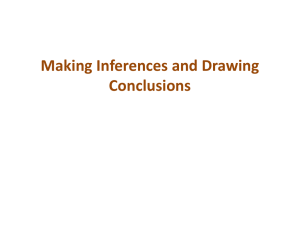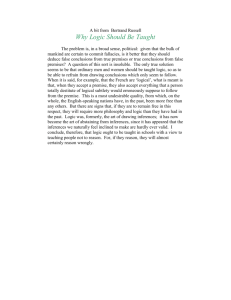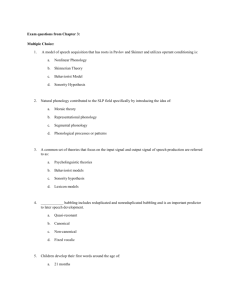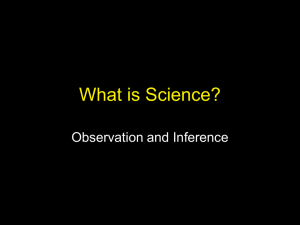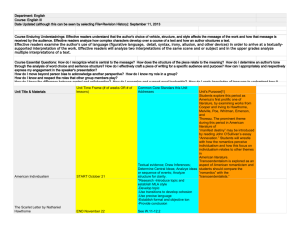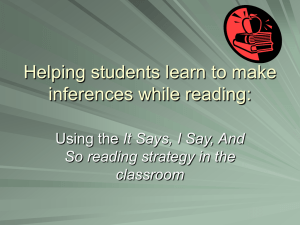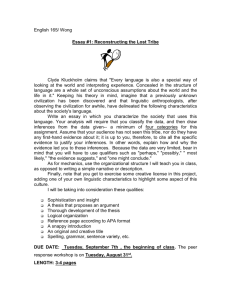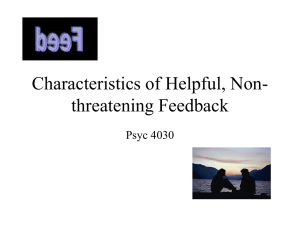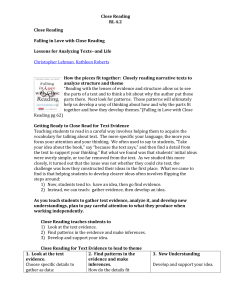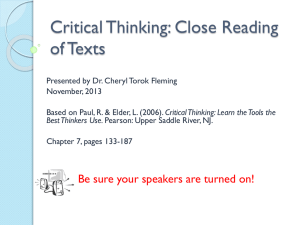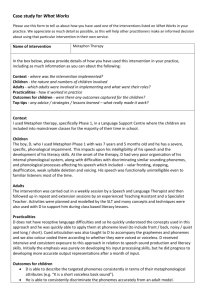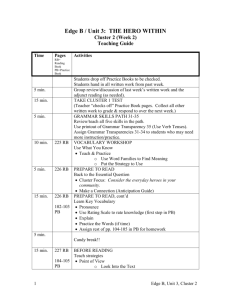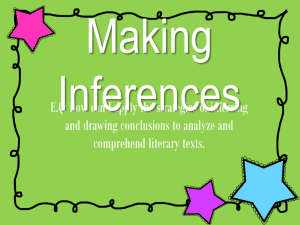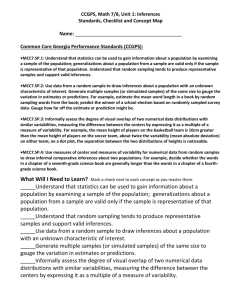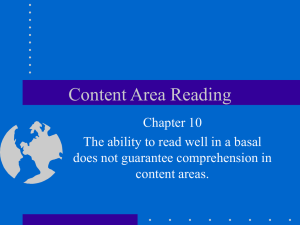ey Terms and Concepts
advertisement
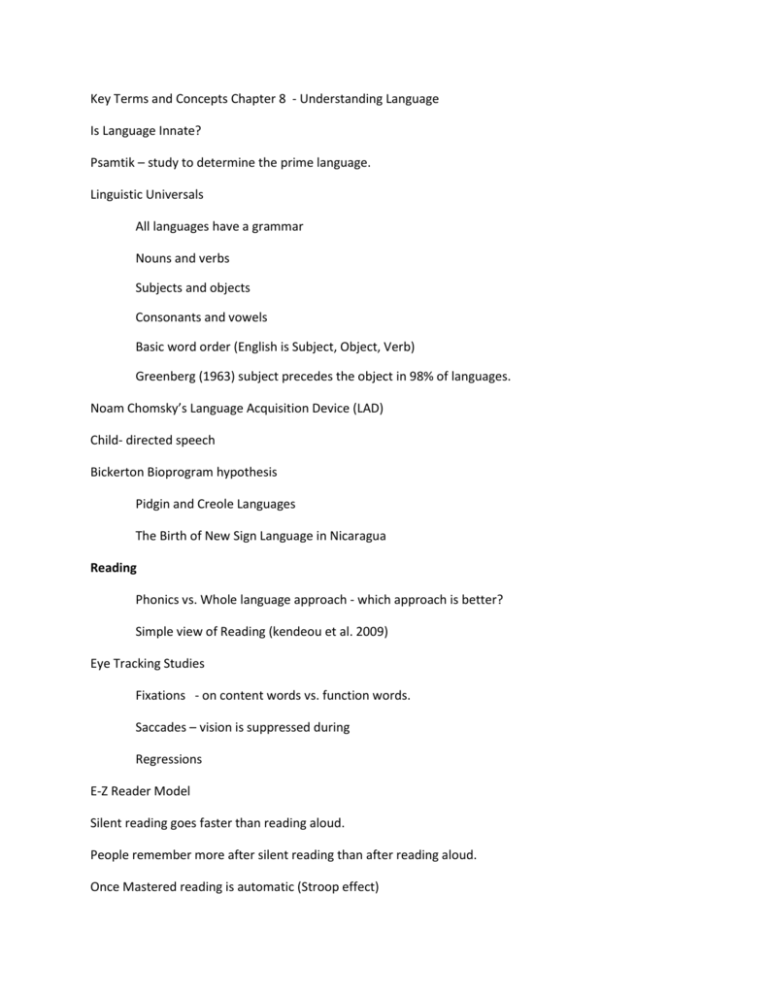
Key Terms and Concepts Chapter 8 - Understanding Language Is Language Innate? Psamtik – study to determine the prime language. Linguistic Universals All languages have a grammar Nouns and verbs Subjects and objects Consonants and vowels Basic word order (English is Subject, Object, Verb) Greenberg (1963) subject precedes the object in 98% of languages. Noam Chomsky’s Language Acquisition Device (LAD) Child- directed speech Bickerton Bioprogram hypothesis Pidgin and Creole Languages The Birth of New Sign Language in Nicaragua Reading Phonics vs. Whole language approach - which approach is better? Simple view of Reading (kendeou et al. 2009) Eye Tracking Studies Fixations - on content words vs. function words. Saccades – vision is suppressed during Regressions E-Z Reader Model Silent reading goes faster than reading aloud. People remember more after silent reading than after reading aloud. Once Mastered reading is automatic (Stroop effect) Sound (phonological) effects on reading Homophone study - van Orden (1987) Errors in proofreading particularly frequent for homophones (e.g., there, they’re, their) Tongue-twister effect (e.g., “Boris burned the brown bread badly.”). Words can be read without phonology. - Used for low frequency rather than high frequency words. - Poor readers use phonology more than better readers. Two Routes to Reading Internal Lexicon Graphemes vs. Phonemes Indirect route used to read new words and pseudowords. (Coltheart et al, 2001) Surface vs. Phonological Dyslexia Consistency vs. regularity The Dutch Language Union Speech Perception Speech is difficult to decode because: Language is spoken very quickly (10 phonemes per sec). Energy breaks do not correspond to breaks between words. Co-articulation Background noise In poor listening conditions people adjust top-down or bottom-up processes to accommodate. TRACE Model (McClelland and Elman, 1986) Both bottom up and top down processes individual processing units, or nodes, at three different levels: • FEATURES (place & manner of production, voicing) • PHONEMES • WORDS Word Superiority Effect Lexical Identification Shift McQueen (1991) found the Lexical Identification shift when bottom-up information was degraded but not when it was not degraded. Understanding Sentence Grammar (syntax) Semantic Information Parsing Garden Path Sentences Garden-path model (Bever, 1970): you pick one structure early on, later have to revise if it isn’t the right one. Constraint-based model MacDonald et al., (1994) Syntactic Heuristics (e.g., Verb bias) Good Enough Theory Swets et al. (2008) Pragmatics Kintch Model (2000) of metaphor interpretation. Metaphors are non-reversible. Common Ground Egocentric Heuristic (Keysar et al. 2000) Gestures (Kelly et al., 2010) congruent and incongruent gestures Noise and Noise (2007) Understanding Discourse Drawing Inferences – going beyond the words. Bridging Inferences (backwards) Elaborative Inferences (forwards) Calvo et al (2006) - Types of Inferences drawn depend on the readers goals. Individual Differences in Working Memory Capacity and Inferences Seductive Detail Effect (Harp & Mayer, 1997). The seductive details effect was stronger for people with low WM Capacity. Schema Theory Hitler Example, Sulin and Dooling, 1974 Situation Models (Zwaan and Radvansky, 1998):

